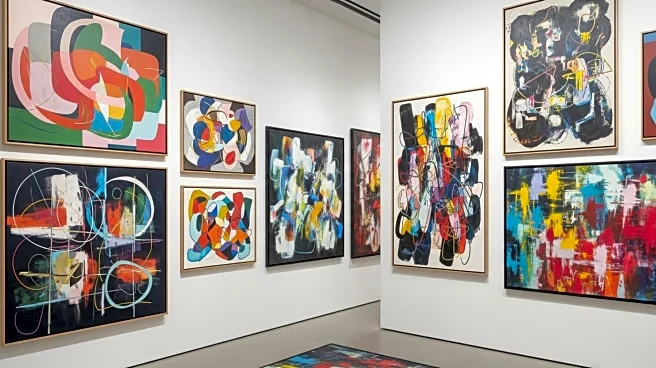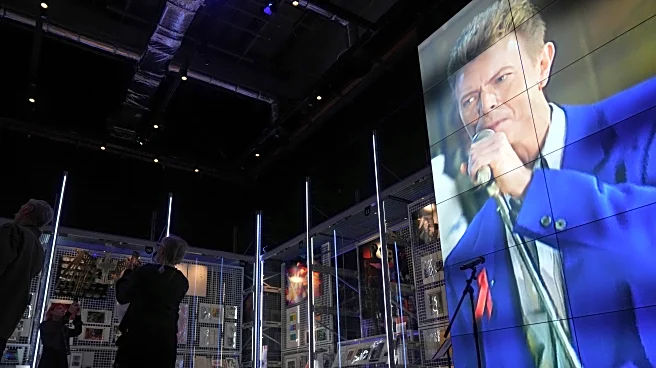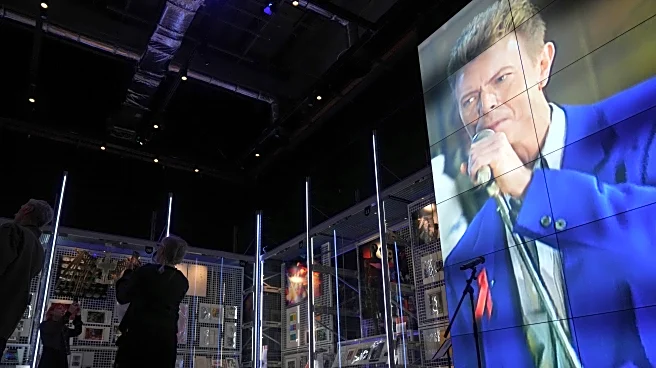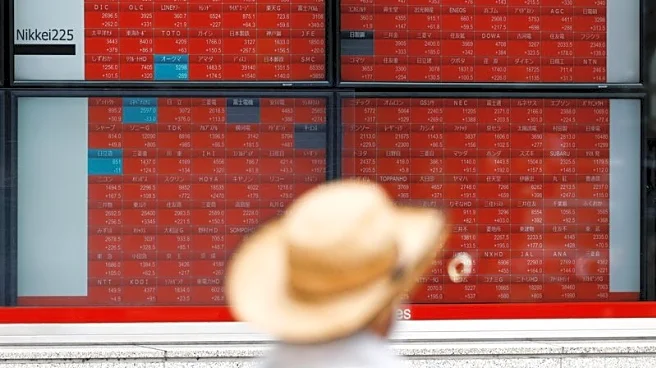What is the story about?
What's Happening?
The art market is currently experiencing a period of contraction, as discussed at the recent Art Business Conference in London. Experts, including Roman Kräussl from Bayes Business School, highlighted that the market's struggles are not merely temporary setbacks caused by external factors like the pandemic or geopolitical tensions. Despite a challenging environment, there are signs of stabilization, particularly in the U.S., where auction sales fell by less than 1% in the first half of the year. This is a significant improvement compared to the 24% drop between the first halves of 2023 and 2024. Additionally, the $1 million-to-$10 million price bracket saw a 13.8% increase in sales, indicating resilience in this segment. The average price per artwork sold online decreased slightly, but the average sale price rose compared to the latter half of the previous year.
Why It's Important?
The current state of the art market has significant implications for various stakeholders, including artists, galleries, and collectors. The stabilization in certain segments suggests potential opportunities for growth and investment, particularly in the U.S. market. The shift in collector preferences towards identity-driven purchases and the need for art businesses to adapt to these changing tastes highlight the evolving dynamics within the industry. This period of recalibration offers a chance for smaller galleries to form strategic collaborations and for collectors to reassess their collections, potentially leading to more inclusive and community-focused practices. The market's ability to adapt to these changes will be crucial for its long-term sustainability.
What's Next?
As the art market continues to navigate these challenges, stakeholders are likely to focus on strategies that embrace the changing tastes of new collectors. This includes simplifying systems for convenience, offering tailored advice, and creating engaging experiences to attract younger clients. The ongoing recalibration may also lead to a reduction in the number of art fairs and a shift towards more meaningful and enjoyable art experiences. The industry will need to balance servicing existing clients while appealing to next-generation interests to ensure continued growth and relevance.
Beyond the Headlines
The art market's current state raises broader questions about the role of art in society and the importance of fostering a deeper appreciation for artistic expression. As the market shifts towards identity collecting, there is an opportunity to explore how art can reflect and influence cultural and social identities. This period of change may also prompt a reevaluation of the traditional art market structures and encourage more innovative and inclusive approaches to art curation and distribution.
AI Generated Content
Do you find this article useful?















